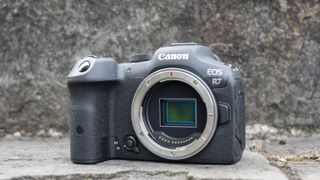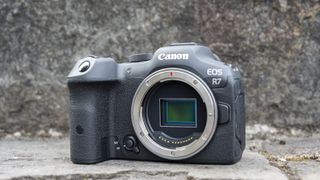- Sigma has announced four APS-C prime lenses for Canon’s RF mount
- All have bright f/1.4 apertures, covering focal lengths from 16mm to 56mm
- The news is a boost for hobbyist cameras like the EOS R7 and EOS R10
Sigma has just announced its first four prime lenses for Canon‘s hobbyist RF-mount cameras – and they’re a long-awaited boost for models like the Canon EOS R7 and EOS R10.
Until recently, Canon had courted controversy for keeping its RF-mount closed to third-party manufacturers. That finally changed back in April, and today, we’re seeing the fruits of that decision with four new APS-C prime lenseswith bright f/1.4 apertures.
Those lenses are the 16mm f/1.4 DC DN (ideal for street and travel), 23mm f/1.4 DC DN (an all-rounder equivalent to 37mm on full-frame), 30mm f/1.4 DC DN (perfect for tighter street photography), and 56mm f/1.4 DC DN (a great new option for portraits).
While Sigma previously announced two zoom lenses for the RF Mount – the 10-18mm f/2.8 DC DN and 18-50mm f/2.8 DC DN – this quartet of prime lenses is a little more exciting and greatly improves the options available for Canon’s APS-C mirrorless cameras.
APS-C sensors are smaller than full-frame equivalents, so they are typically found in more affordable, hobbyist camera bodies. In Canon’s lineup, models like the Canon EOS R10 and EOS R7 have in-body image stabilization (a handy feature because none of Sigma’s new lenses are optically stabilized).
As usual, Sigma’s new lenses promise to offer pretty good value and are available to pre-order now. The 16mm f/1.4 DC DN is priced at $489 / £389 and the 23mm f/1.4 DC DN costs $599 / £479, both available from January 23. The 30mm f/1.4 DC DN ($369 / £319) and 56mm f/1.4 DC DN ($529 / £419), meanwhile, will go on sale a little earlier on December 5.
What about full-frame Canon cameras?

These four Sigma lenses might be largely identical to the ones announced for Nikon Z cameras in February 2023, but they’re still a big bonus for anyone who owns (or is looking to buy) an APS-C Canon camera.
Canon fans have been starved of the lens choice enjoyed by Sony and Fujifilm shooters, whose mounts now offer a wide range of third-party options from the likes of Viltrox, Tamron and Sigma.
But these new Sigma primes, which are particularly appealing for street, travel, and portrait shooters, mean Canon cameras are finally playing catchup with their rivals on the lens front – at least the models with APS-C sensors are.
The bad news is that Canon doesn’t appear to encourage a similar openness for the best full-frame cameras in its lineup. There’s been no news or comment on similar lens options arriving for the Canon EOS R5 II, whichmeans those cameras will continue to miss out on some of the more exotic and good-value glass enjoyed by rivals.
That isn’t necessarily a deal-breaker for everyone and didn’t stop the EOS R5 Mark II from pipping Nikon to our Camera of the Year award, but it is something to consider depending on your shooting needs and taste in lenses.
You might also like
Services Marketplace – Listings, Bookings & Reviews
